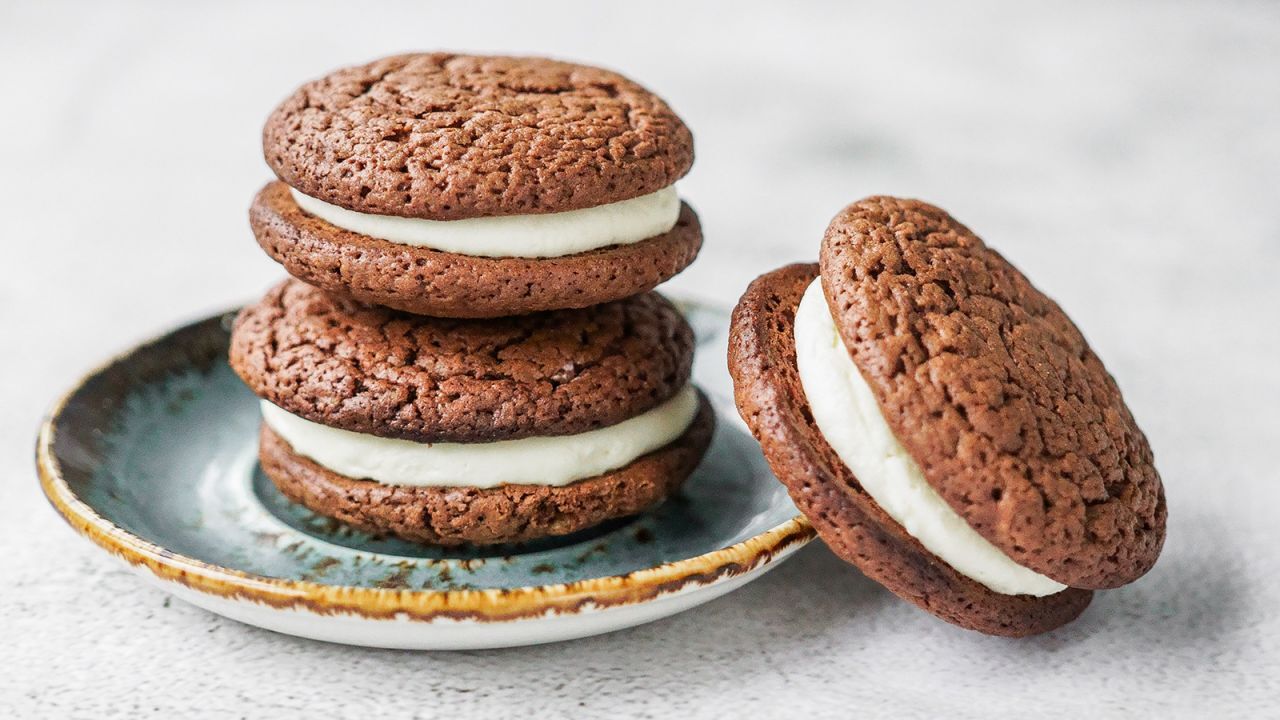Without dessert, what would a meal be? In fact, we wouldn’t blame you if you choose to forgo dinner and only eat dessert. There is a dessert for everyone, whether you prefer chocolate-heavy meals or fruit-based ones. And just as we’ve talked about in earlier postings about the tastiest pizzas and most creative hot dogs from all over the country, different regions of the country take pride in their distinctive regional sweets. Here are some of the best american sweets from all over the United States, from New Orleans’ beignets to Oregon’s Marionberry Pie.
1. Berger Cookies
Popular treat from Baltimore, Maryland, are berger cookies. The first cookie was pretty unusual — soft and cake-like with a delectable fudge icing — and was created in 1835 when German immigrant Henry Berger established his own bakery in the region. The company website states that “unless the cookies are identified as being Berger Cookies, you aren’t receiving the original Baltimore classic” despite the fact that they are frequently reproduced but never quite replicated, particularly not by mass cookie producers.
2. Beignets
French colonists introduced this dessert to North America for the first time in the 17th century. Acadians abandoned the region once the British took control, migrating to Louisiana, but the fried, sugar-dusted dough dessert quickly became popular in Canada’s Acadia province. Louisiana had a large population of French settlers in the early 1800s, which is why the Acadians, later known as the Cajuns, moved there and brought their culture, language, and, of course, food. These days, people wait hours in line for these fried dough squares topped in powdered sugar at locations like New Orleans’ well-known Café du Monde.
3. Buckeyes
Probably the first thing that comes to mind when you hear the phrase “Buckeyes” is the mascot of Ohio State University. Not a sports fan? Thus, in that instance, or if you’re from Ohio, you might know more about buckeye nuts. The unusual no-bake delicacy known as buckeyes uses buckeyes, which are a fruit that is shed by trees of the same name and resemble chestnuts. Buckeyes are allegedly the creation of Ohioan Gail Tabor and were first offered for sale at Ohio State sporting events in the 1960s. They are smooth peanut butter balls dipped in dark chocolate.
4. Black and White Cookies
Black and white cookies, a favorite in New York City, are baked with a soft cake base, much like Berger Cookies. Nonetheless, fondant is frequently used to top this treat. Vanilla fondant is placed on one side, while chocolate fondant is placed on the other. Delicious variations of these two-toned delicacies are available at numerous bakeries (and restaurants) in NYC, including Glaser’s Bakery and Joyce Bakeshop. Yet, the well-known eatery Zabar’s asserts to produce some of the state’s greatest black and white cookies.
5. Whoopie Pies
Although whoopie pies are prepared all throughout the country, its origins are in New England, where they have a long tradition. Whoopie pies are actually Amish in origin, but they are most frequently associated with Maine or Massachusetts. They are still offered for sale in Amish marketplaces all around Pennsylvania. Children would exclaim, “Whoopie!” when they discovered these sweets in their lunch, according to Amish lore. And it’s simple to see why.
The “pies,” which are really more like small cakes, come in a variety of sizes but are frequently the size of a large hamburger. Whoopie pies are often created with tender chocolate cookies and a creamy, white filling in the center.
6. Fortune Cookie
These days, takeout orders from your neighborhood Chinese eateries sometimes come with fortune cookies. Yet, the origin of these well-known desserts for after dinner is Japan. Several stores in Kyoto, Japan, offered folded crackers with fortunes tucked inside in the 1870s. They were referred to as “fortune crackers” or tsujiura senbei. Japanese immigrants arrived in the United States over the following few decades to cover the labor shortage caused by the bigoted Chinese Exclusion Act of 1882, which drove Chinese immigrants out of the country. The fortune cookie, or more specifically, its ancestor, a sesame- and miso-flavored cracker, became something of a standard as Japanese bakers established themselves in locations like San Francisco and Los Angeles.
It is widely disputed that San Francisco’s Japanese Tea Garden in Golden Gate Park was the first location to serve the dessert, despite the fact that this is one of the most well-known origin myths for the modern cookie. The Tea Garden, however, claims to have been among the first, purchasing their cookies from Benkyodo, a Bay Area bakery that claims to have developed a method of mass making the cookies in 1911. Of course, this resulted in the flavor profile changing to vanilla and butter.
But how did this Chinese restaurant-associated Japanese cracker develop into a cookie? Chinese food was more popular in the U.S. despite the Chinese Exclusion Act, which encouraged more Japanese immigrants to build similar establishments. Giving Americans some fortune cookies with the bill seemed like a simple way to satisfy their sweet tooths because they frequently expected dessert with their meals.
7. Marionberry Pie
A kind of blackberries known as the marionberry was created in Oregon in 1945. It is frequently used in Oregonian recipes for jam, ice cream, cobbler, cocktails, milkshakes, and, of course, the perennially popular marionberry pie. It is sweeter than normal blackberries. Blackberry pies are common throughout the country, while marionberry pies are almost exclusively made in Oregon. The berries are delicate, which makes shipping them challenging. But trust us, it’s worth the trip to the West Coast to get marionberries cooked into a flaky pie crust!
8. Key Lime Pie
Florida, and Key West in particular, are famous for its key lime pie. In fact, the pie is regarded as the Florida Keys’ national dessert. The typical key lime pie recipe calls for a filling comprised of key lime juice, sweetened condensed milk, and egg yolks, however there are undoubtedly many distinct versions.
According to lore, William Curry, the first millionaire self-made in Florida, had a cook by the name of Aunt Sally. She allegedly created the pie in the late 1800s utilizing the abundant limes in the region. When life offers you citrus, as the saying goes, make sweets.




